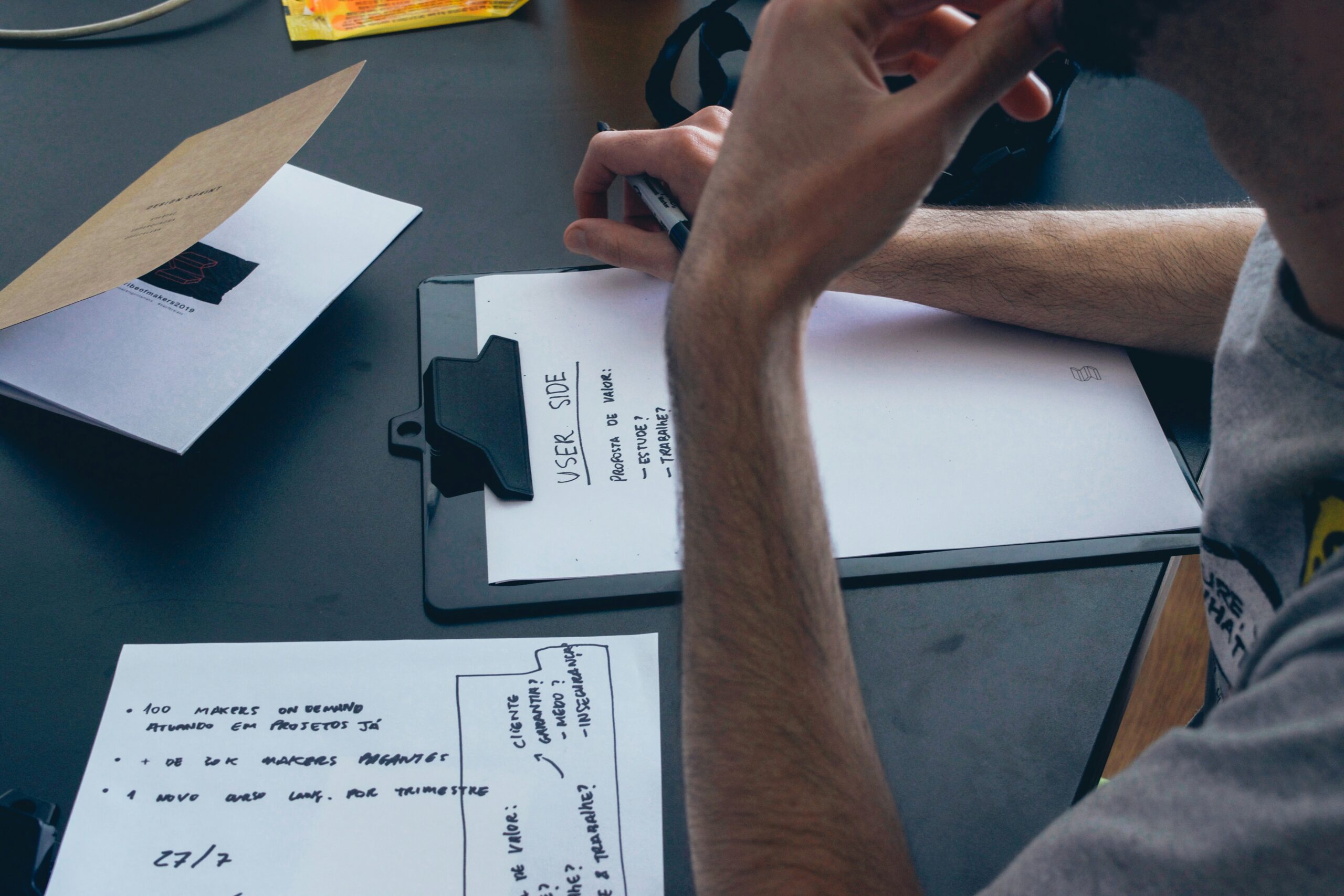User experience research and usability testing are vital for creating a successful web design that boosts customer satisfaction and revenue. Many businesses struggle to understand the difference between these two concepts, leading to missed opportunities in innovation. This post will clarify these terms, discuss key insights into user experience research, and outline essential usability testing methods. By the end, readers will know how to implement user experience strategies effectively, helping solve common pain points in their projects and enhance overall customer satisfaction.
Key Takeaways
- User experience research reveals user emotions and behaviors for effective design decisions
- Usability testing evaluates product effectiveness and user satisfaction, guiding improvements
- Integrating both methods ensures a comprehensive understanding of user needs and interactions
- Creating personas based on research enhances communication strategies and customer service
- The future of these methods relies on technology advancements for improved user insights
Defining User Experience Research and Usability Testing

User experience research and usability testing are two vital processes in web development. User experience research focuses on understanding user emotions and behaviors through various methods, including quantitative analysis and audits. Usability testing evaluates how well a product meets user needs, providing actionable insights for improvement. Differentiating these methods helps clear common misconceptions and highlights each method’s importance in creating effective digital experiences.
Differentiating User Experience Research From Usability Testing
User experience research focuses on understanding users and their personas to gain insights into their emotions in a natural environment. This research often involves methods like eye tracking to observe how users interact with a website, helping identify friction points within the workflow. On the other hand, usability testing measures a product’s effectiveness while assessing user satisfaction and reducing the risk of poor user experiences.
Understanding the Importance of Each Method
Understanding the importance of both user experience research and usability testing is essential for any web development project. User research provides insights into user pain points and preferences, allowing designers to create intuitive workflows that resonate with users. Meanwhile, usability testing builds confidence in a product by analyzing how effectively it meets user needs, ultimately leading to improved satisfaction and engagement.
- User experience research reveals user pain points and emotions.
- Usability testing measures product effectiveness and satisfaction.
- Both methods work together to enhance the overall user experience.
Common Misconceptions in User Experience Research
Common misconceptions about user experience research can lead to misinterpretations and ineffective strategies. Some believe that this research only pertains to market segmentation, overlooking its role in shaping a strong value proposition that is essential for guiding user interface design. Additionally, many fail to consider the crucial aspect of ethics in user research, assuming that all data collection methods are permissible, which is not the case. Understanding these factors helps create more effective research practices that truly benefit users while delivering measurable results:
- User experience research informs market segmentation.
- It helps define a strong value proposition.
- Ethics are essential in data collection methods.
- Effective user interface design relies on user insights.
Key Insights Into User Experience Research

This section covers essential aspects of user experience research that enhance understanding and effectiveness. Techniques for gathering valuable user insights, such as qualitative research and web analytics, will be discussed. Best practices will provide guidance for conducting research efficiently. Additionally, analyzing and interpreting research data and creating personas based on findings are key components that contribute to a stakeholder’s knowledge in shaping user-focused designs.
Techniques for Gathering Valuable User Insights
Experts often employ strategies focusing on user touchpoints and navigation patterns to gather valuable user insights. Conducting interviews or surveys can help uncover users’ thoughts and feelings toward a website’s architecture, enabling designers to pinpoint improvement areas. Additionally, employing web analytics offers data on user behavior, guiding future adjustments to create a more seamless user experience.
Best Practices for Conducting Research Effectively
To conduct user experience research effectively, it is important to employ best practices such as conducting interviews to gather personal data directly from users. Observation techniques can reveal how users interact with a website, shedding light on their natural behaviors. Additionally, sorting through findings to establish benchmarks ensures that insights obtained are actionable and can significantly enhance the overall user experience.
Analyzing and Interpreting Research Data
Analyzing and interpreting research data is crucial for understanding user behavior and preferences. By evaluating this data, teams can refine the information architecture of websites or mobile app development projects, ensuring they meet the needs of their target audience. This process also highlights accessibility issues, guiding improvements that enhance the overall user experience and satisfaction.
- User behavior insights guide design decisions.
- Refined information architecture supports user navigation.
- Accessibility improvements address user needs.
- Interpreting data informs effective mobile app development.
Creating Personas Based on Research Findings
Creating personas based on research findings is essential for improving customer service and delivering tailored experiences. By analyzing user behaviors and motivations, businesses can develop detailed personas that represent key segments of their target audience. These personas provide insights into enhancing communication strategies and strengthening the brand’s connection with users, ultimately leading to a competitive advantage in the retail sector.
Essential Usability Testing Methods

This section explores various usability testing techniques that organizations can implement to evaluate their websites and products. It will cover how to set up effective usability testing sessions, the metrics used to measure usability success, and the difference between A/B testing and usability testing. These insights are particularly relevant for consumer-focused businesses and healthcare organizations aiming to enhance customer engagement and satisfaction.
Types of Usability Testing Techniques
Usability testing techniques are vital in evaluating how users interact with a website or product. Common methods include heuristic evaluations, which involve usability experts analyzing a site against established web content accessibility guidelines. Ethnography can also be beneficial, as it allows observers to study users in their natural environment, capturing authentic interactions and behaviors that can be transcribed for further analysis. This can ultimately drive better user adoption and satisfaction.
Setting Up Effective Usability Testing Sessions
Setting up effective usability testing sessions involves careful planning and attention to both methodology and user needs. It begins with defining clear objectives, such as conducting task analysis to identify key user tasks and measuring motivation and sentiment analysis during the testing. This structured approach ensures testers gather meaningful insights that can directly influence product improvements, leading to a more satisfying user experience.
Metrics to Measure Usability Success
Metrics to measure usability success are critical for gaining insights into how users interact with a user interface. By utilizing analytics, web developers can track user behaviors during usability testing, identifying what works well and what doesn’t. Focus groups can offer direct feedback during sessions, facilitating a deeper understanding of user satisfaction and engagement, which is particularly valuable for optimizing both websites and mobile app experiences.
A/B Testing vs. Usability Testing: Knowing the Difference
A/B testing and usability testing serve different purposes in user experience design. A/B testing, a form of quantitative research, compares two versions of a webpage or product to see which performs better based on user engagement metrics. In contrast, usability testing focuses on assessing how users interact with a system, providing insights into user behavior and satisfaction, ultimately guiding enhancements for a better user experience.
Combining User Experience Research and Usability Testing

Integrating insights from user experience research and usability testing provides a comprehensive understanding of the end user. By creating a feedback loop between research and testing, teams can ensure their prototypes effectively enhance the customer experience. This section will explore practical case studies showcasing successful integrations, highlighting the synergistic benefits of blending these methods for optimal outcomes.
Integrating Insights for Comprehensive User Understanding
Integrating insights from user experience research and usability testing allows organizations to gain a complete view of their users’ needs and behaviors. For instance, user experience research can highlight potential pain points, while usability testing reveals how effectively these areas are addressed in a product. This blend of methods enhances the design process and ensures that the final product delivers greater satisfaction and engagement by aligning closely with user expectations.
Creating a Feedback Loop Between Research and Testing
Creating a feedback loop between user experience research and usability testing greatly enhances the design process. Teams can better understand user needs and preferences by continuously integrating research insights with usability test findings. For example, if research identifies a common pain point, usability testing can assess how well the product addresses this issue, allowing for swift improvements that boost user satisfaction.
Conclusion
User experience research and usability testing are essential processes for creating effective digital products. User experience research offers insights into user emotions and behaviors, while usability testing evaluates how well a product meets these needs. By integrating both methods, teams can enhance user satisfaction and engagement through informed design choices. Understanding the differences and benefits of each approach empowers organizations to deliver user-centered solutions that drive success.
